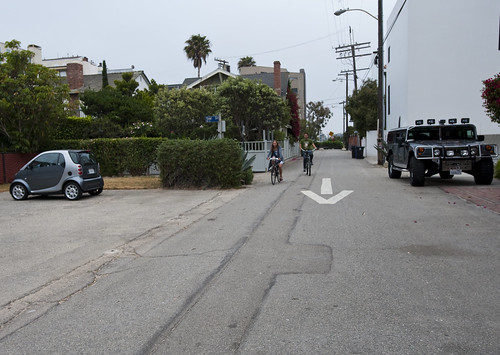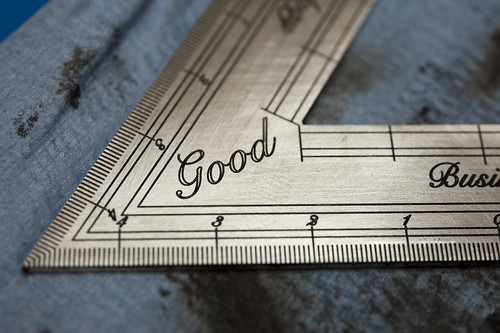Scales of things and their relationships. A curious moment while out on a weekend’s Urban Scout, with these bicyclists, who could fit into the Smart Car that could fit into the ridiculous, shameless Hummer SUV. This scene reminded me of the image of relatives scales of occupancy between the same number of people, on bikes, public transportation buses, and in cars. Also in there is just how much space this same fixed number of people take up as normal, human pedestrians.
Why do I blog this? Curiosity pursues the relationships of things and their scales through the evolution of our propensity to measure and quantify. I’m curious about this history, as things have not always, nor do they necessarily have to always from now on, be measured with numbers. Why would one want to shift the units of measure from numbers and quantities to something else? Perhaps in some areas, because trust in numbers and bigger/smaller is better may not be the proper end-game. A larger number of features than the competitor’s thing-y does not always mean better experiences. More horse-power than your neighbor’s new fancy car does not always mean better for the environment. More room-y interior-ness leading to wider swaths of impermeable concrete does not mean a better world. Larger percentage returns/profits does not always mean a better future. We’ve come to a point of trusting numbers with such fluency and thoughtlessness that I think, at least for the Bureau of Counterweights and Alternative Measures, that it would be a good thing to think this all through, critically, historically, with good dose of introspection. What might other measures, counter to the ones we have now that appear so God-given and inalienable? So — how do you start making the case for other ways of coming to conclusions about what to make/design/do? First, figure out where all this came from, observe the scales of things in relation to the value of things. Think of alternative strategies.


